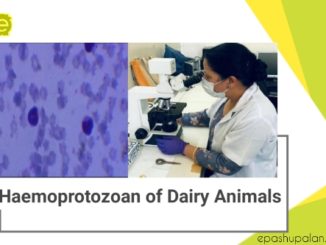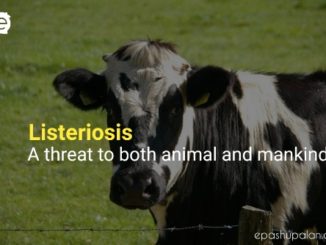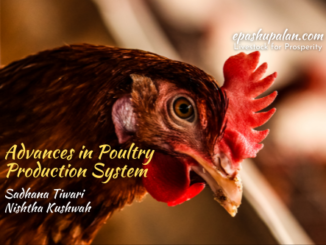The word vice comes from the Latin word vitium, meaning “failing or defect”. In other words, it is a fault, defect, an immoral, wicked or evil habit/ action/ trait, a degrading practice, habitual abnormal behavior of a destructive kind regardless of the legality or objective harm involved. It is common in horses, pigs and chickens but may occur in any species if animals are kept in confined spaces. Poultry may suffer from certain vices (bad habits), which become quite extensive right from the beginning and their eradication poses a big problem. These vices may cause loss to the poultry farmer. Common poultry vices are Cannibalism, Egg hiding, Egg eating and Pica.
A. Cannibalism
Cannibalism is the act of consuming another individual of the same species as food. Cannibalism is a common ecological interaction in the animal kingdom and has been recorded in more than 1,500 species. As far as poultry is concerned, cannibalism is a condition in which birds of a flock attack their pen mate and eat its flesh, which may impose deep wounds and heavy mortality. Cannibalism is of different type: Toe pecking, feather pecking, comb pecking and vent pecking. Vent pecking is common in laying birds. Once the birds adopt this vice, it spreads rapidly in the flock. If the problem is allowed to persist, it may prove costly. Cannibalism will lower the bird’s value due to torn and damaged flesh, poor feathering and may result in high death losses. If it is not controlled when the condition is mild, it is difficult to eliminate. It is always better to believe in the quote ‘Prevention is better than cure’ to control cannibalism. There is not a particular reason for cannibalism. Some of the reasons are as follows:
- Provision of less diet: If the birds have to fight for food and water, or if the birds are always hungry they will increase pecking. It’s important that birds have free access to water and feed at all times. The pecking order determines which birds get to eat and when. Hence, with inadequate feeder space, birds at the lower end of the pecking order may never be allowed to eat.
- Imbalanced diets: Extremely high energy and low fiber diets cause the birds to be extra active and aggressive. Deficiency of protein and amino acids like arginine and methionine, salt and minerals, excessive maize in the diet will also cause birds to pick feathers.
- Excessive heat: If the brooding temperature is very high, they can become extremely cannibalistic. At first week, the brooding temperature should be 95°F and then should be decreased by 5°F per week, until it reaches 70°F.The temperature should be measured at the height of the birds back directly under the heat source.
- Excessive light: Excessive bright light or longer periods of light will cause birds to become hostile towards one another. White light bulbs more than 40 watts should not be used to brood fowl. If larger bulbs are required for heat, red or infra-red bulbs should be used. 15 or 25 watt bulbs may be used above feeding and watering areas for rearing birds of 12 weeks of age and above. Photoperiod more than 16 hours per day made have adverse effects. Constant light can be stressful to the birds.
- Shortage of nesting boxes: Placing bright lights near nesting areas should be avoided. Further, 1 nest may be allowed for every 5 hens. Vent pecking by layers is also a common problem.
- Improper disposal of dead birds: Birds pick on crippled or dead birds in their pens because of social order’ peck order and curiosity. If pecking starts, it can quickly develop into a vicious habit.
- Genetic predisposition
- Mixing of different types of fowl: Mixing different ages and sizes of fowl or fowl with different traits encourage pecking due to curiosity by disrupting the flock’s normal pecking order. Brooding different species of poultry together in the same pen should be avoided. Toe pecking in the first few weeks is often started due to curiosity of the different colors or traits. Further, slow feathering birds are most prone to cannibalism. Birds with slow feathering have immature tender feathers exposed for longer periods of time leaving them open to damage from pecking. Hence, rearing slow feathering birds with other birds should be avoided.
- Haemorrhages in the external genitalia due to laying of large eggs by new hens attracts other birds and once the birds develop taste for blood and meat they develop the habit of cannibalism
- Loss of feathers from the body or haemorrhage from the skin due to parasitic infestation may predispose to cannibalism.
- Wounds inflicted by fighting between the birds may also serve as a stimulus for cannibalistic activity.
- Overcrowding in the poultry house: Large breeds of chickens should be allowed 0.25 sq. ft./bird for first 2 weeks, 0.75 sq. ft./bird for 3-8 weeks, 1.5 sq. ft./bird from 8 to 16 weeks and 2 sq. ft/bird from 16 weeks onwards. While, Bantam chickens require half the space as large chickens, gamebirds require double the above recommendations. 25 to 30 sq. ft/bird after 12 weeks of age for pheasants or pick prevention devices like plastic peepers or blinders may be used.
- Abrupt changes in management regimen: If young birds are moved to a new location, it is best to move some of their feeders and waterers with them in order to help them adapt. When larger feeders and drinkers are placed, the smaller ones may be placed in the pen along with the larger ones for a few days to help during the change.
- Introduction of new birds to the flock: Every time a new bird is added or removed from a flock, the pecking order of the flock is disrupted. It is best to introduce any new bird into your pen by splitting the pen with a temporary partition for at least a week to help the birds to get to know each other. Also, adding the birds to the pen at night may be done. After introductions of new flock adequate supervision is necessary to check the pecking status. It may take a week or more for flock to re-establish the new pecking order.
- Prolapse Pecking: Prolapse may occur in very young or fat laying flocks. Prolapse is when the uterus stretches and tears and takes longer to properly return into the body cavity after the egg is laid. This is most common in young pullets that has started laying or in fat layers. When the uterus is exposed for a period of time, other birds will see it and pick at it out of curiosity. Once they pick at the uterus, it bleeds and the picking progresses to cannibalism. Proper feeding and management practices can prevent this problem. Fat birds should be put on a low energy diet.
Control measures
- Debeaking: The word debeaking is a misnomer. In fact, it should be more appropriately called as ‘beak trimming’. Debeaking can be done right from the day old chicks to any age. Debeaking can be done either manually or mechanically. Mechanical way of debeaking has an advantage that it does not require second cutting of beak which is sometimes required in case of manual debeaking. Trim the beak by removing about 1/3 of the upper beak is trimmed providing a square tip and tip of the lower beak is cut. Bleeding is prevented by touching a hot iron rod at the site of cut. Debeaking must be performed by a competent and trained person; else there may be excessive bleeding resulting in starvation and death.
- Wounded birds should also be segregated and given proper treatment. Margosa oil is found effective for wound healing in poultry.
- Birds involved in cannibalism must be
- Addition of raw meat in the feed has been found to be helpful. If raw meat is not available, amount of fish meal in the feed may be increased.
- Laying nests must be built at peaceful, isolated places as the congested external genitalia of layers post oviposition attract other birds for cannibalism.
- Provision of red bulbs near laying nests may check cannibalism.
- Overcrowding of birds must be immediately rectified.
- Supplementation of vitamins, mineral mixture, salt and methionine may be beneficial
- Provision of adequate quantity of feed.
- Use of mechanical devices like plastic peepers or blinders in aggressive birds like game birds may prove beneficial.
- If the birds are foraging birds like turkeys or guinea fowls, a large handful of fresh greens like berseem, spinach etc. each day. This increases the fiber content of the bird’s diet. A high fiber diet will keep the bird’s gizzard full and keeps the birds content.
- Placing colored or shiny items in the pen for the birds to pick at may keep them busy and draw attention away from other birds.
- If possible, the pen temperature may be reduced.
- If the birds are reared in semi-intensive system, the birds may be allowed to use up their energy in an enclosed outside run. Thus, the birds will be busy pecking greens, ground and insects instead of other birds.
B. Egg Hiding
- Egg hiding is a maternal instinct of jungle fowl and is not encountered in domestic fowl. However, this habit may develop in the domestic fowl which are allowed freedom of movement.
- They hide the eggs in the field, bushes etc.
Control measures
- Free movement of the birds may be restricted.
- Laying area should be built inside poultry house and made comfortable by providing sawdust, straw etc.
C. Egg Eating
Sometimes birds develop the tendency to eat their own eggs. It becomes quite difficult to prevent this vice. It may start due to the presence of cracked eggs or accidental breaking of eggs and once the birds develop taste for it, they start breaking their own eggs. Factors responsible for breaking of egg or cracking of egg are thin or soft eggshell or lack of sufficient bedding material in the laying area. Egg holding for longer period in the pens may also encourage the birds to start egg eating.
Control measures
- Isolation of the birds
- Quantity of limestone and protein should be increased in the diet.
- Birds eating eggs should be caged such that the eggs drop out after the lay.
- Debeaking also reduces this tendency.
- Darkness in the laying area may prevent his habit.
- Egg collection interval should be reduced.
D. Pica
- Birds start eating materials which are not fit for consumption, such as feathers, litter material, threads, etc.
- It is less commonly found in modern poultry farm.
- Phosphorus deficiency, parasitic infestation, new litter material etc. may predispose the birds to pica.
- Good management and balanced diet are recommended for the prevention of pica.
E. Hysteria
Hysteria has been reported in birds reared in both deep litter system and cage system. The etiology of hysteria is unknown. However, severe hysteria results in decrease in egg production and mortality. The plausible causes of hysteria may be overcrowding and injuries due to cannibalism. Changes in light intensity, supplementation of niacin and removal of claws have been tried with limited success. However, high levels of dietary tryptophan may be useful in alleviating hysteria in poultry.
F. Flightiness
Domestic chickens are avian but in normal conditions do not fly. Flightiness is a vice in poultry and has been observed in some light breeds viz. Ancona, Leghorn, Araucana. The etiology of flightiness is unknown but the causes may be overcrowding or imbalanced diet. Control measures may include trimming of flight feathers of one wing and brailing i.e. binding the wing with a soft cord so the wing can’t be opened up for flight.






Be the first to comment